Origins of Channapatna Toys
Channapatna toys are a timeless craftsmanship that originated in Channapatna. Popularly known as “Gombegala Ooru” or Toys Town located 60km from Bengaluru in the state of Karnataka, India.

Wooden 6 Pin Bowling Set, a toy by Channapatna Toy Artisans. Meticulously handcrafted using the finest quality wood, smooth finish and vibrant color.
With rounded edges and non-toxic paints, this bowling set prioritizes your child’s safety.
These toys are known for their intricate designs, non toxic, bright colors and durability, and have been a part of India’s cultural heritage for centuries. In this article, we will delve into the origins of these unique toys and explore how they have become one of India’s most famous exports.
The History of Channapatna Toys
The origin of Channapatna toys can be traced back to the reign of King Tipu Sultan in the 18th century. The king, who was impressed by the intricate wooden toys invited artisans from Persia to teach the local craftspeople the art of lacquerware.
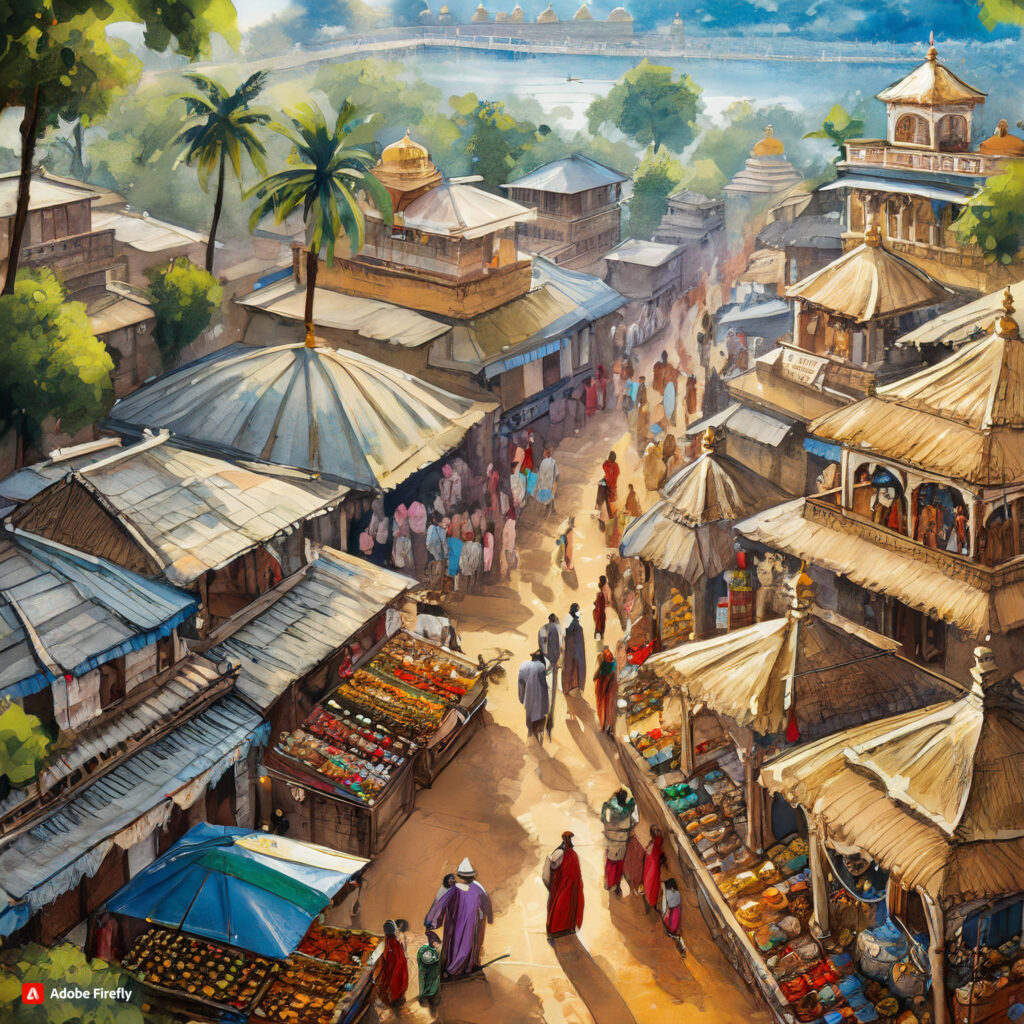
Tipu Sultan (Sultan Fateh Ali Sahab Tipu; 1 December 1751 – 4 May 1799), commonly referred to as the Tiger of Mysore,[3] was the Indian ruler of the Kingdom of Mysore based in South India.
Over time, the local craftsmen developed their own unique style and techniques, resulting in the creation of the Channapatna toy. These toys became so popular that they were exported to countries like England, France, and Germany, where they were highly prized by the royalty and the wealthy.
The Popularity of Channapatna Toys
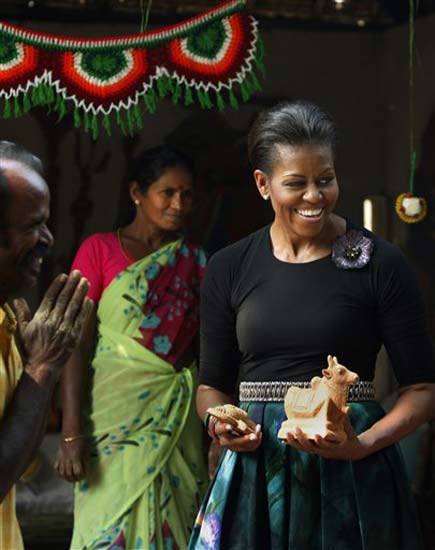
Some quaint wooden Channapatna dolls may adorn the shelves of the White House, as Channapatna toys were one of the several Indian handicrafts that charmed US first lady Michelle Obama at the National Handicrafts and Handloom Museum here on Monday.
“Wow, this train looks awesome,” Michelle Obama is believed to have exclaimed while picking up the toy train at the Channapatna stall.
Channapatna toys have gained a reputation as one of India’s most popular exports, and they are widely sought after by collectors and enthusiasts all over the world. The toys are not only beautiful to look at, but they are also eco-friendly, as they are made using natural materials and dyes. Additionally, they are considered to be safe for children, as they are made using non-toxic materials and are free from sharp edges and small parts.
Preserving the Legacy

Channapatna Toys: Wooden Wonders Protected by Geographical Indication (GI) Status
Channapatna toys, traditional wooden treasures hailing from a town 60 Km From Bangalore, Karnataka, received a coveted Geographical Indication (GI) tag in 2005. This traditional craft is protected as a geographical indication (GI) under the World Trade Organization, administered by the state govt.
In recent years, the popularity of Channapatna toys has increased even further, due in part to the growing demand for eco-friendly and sustainable products. This has led to the creation of new designs and styles, and the introduction of new materials and techniques, ensuring that the tradition of Channapatna toys continues to thrive.
The Master Craftsman of Channapatna Toys: Bawas Miyan
While Tipu Sultan may have been the first to promote Channapatna toys, it was local resident Syed Bawa Saheb Miyan, commonly known as Bawas Miyan, who played an equally important role in popularizing these unique crafts and expanding their production.
In the early 20th century, Bawas Miyan made two trips to Japan to learn about lacquer and toy-making techniques. Upon his return, he established a school to train the youth of Channapatna in the art of handicraft making, earning him the nickname of “Master” Bawas Miyan.
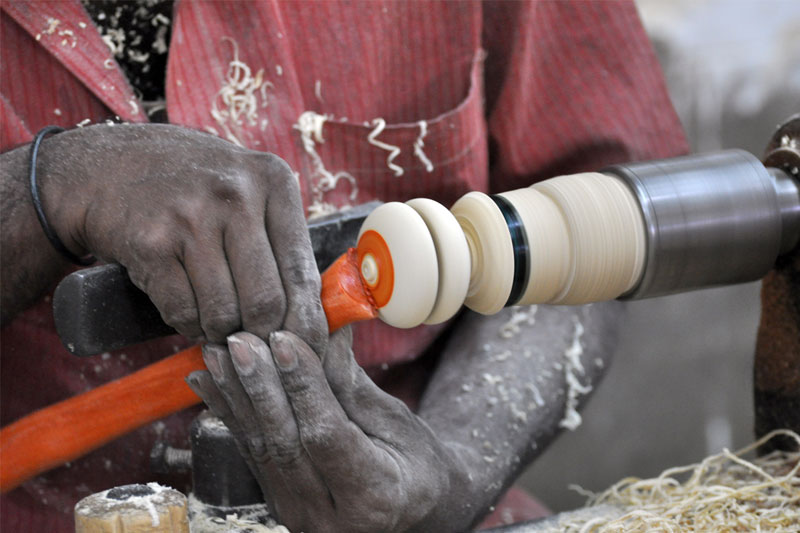
Bawas Miyan had completed his FA (equivalent to eighth or ninth standard in India during British rule) and was working in a lacquerware training center in Channapatna when he went to Japan twice, in 1904 and 1909, to learn about new designs and coloring processes for wooden toys.
On his return, Bawas Miyan established a training center for the unemployed youth of Channapatna, teaching them the manual process of making toys and other handicrafts. This is why he was known as either “School” Bawas Miyan or “Master” Bawas Miyan.
Bawas Miyan passed away in 1914, leaving behind a legacy that continues to shape the toy-making industry in Channapatna. Today, his impact on the development of these unique handicrafts is still felt and revered.
The Lathe Revolution
Bawas Miyan’s son-in-law, Syed Yaddullah, took over the training school after Bawas Miyan’s death in 1914. As a mechanic by profession, Syed Yaddullah introduced lathes for making toys, which led to a major increase in the production of Channapatna toys. This innovation transformed the traditional handicraft into a thriving industry and established Channapatna as a hub for toy-making in India.
The Art of Channapatna Toys
The process of making Channapatna toys is both intricate and labor-intensive. It involves several stages, including the selection of wood, carving, polishing, lacquering, and painting. The wood used for making the toys is typically a type of softwood called Aale mara, which is known for its smooth texture and easy workability.
Once the wood is selected, it is carved into the desired shape using simple tools like chisels, knives, and sandpaper. The carved toys are then polished to remove any roughness and enhance their texture. Next, the toys are coated with a layer of lacquer, which acts as a sealant and protects the toys from damage.
Finally, the toys are painted using natural dyes made from sources like flowers, leaves, and fruits. The dyes used in Channapatna toys are known for their vibrant colors and durability, and they give the toys their distinctive appearance. The painting process is done by hand, and it requires a high level of skill and precision to create intricate designs and patterns.
From Tradition to Modernity
Despite the rapid modernization and industrialization of society, Channapatna toys have managed to maintain their traditional charm and authenticity. Today, Channapatna toys are exported to various countries, including the US, Europe, and the Middle East, and are highly valued for their beauty and craftsmanship. However, the traditional techniques and methods of making these toys are still practiced by the local artisans, ensuring that the legacy of Channapatna toys continues to thrive.
Despite the increasing popularity of Channapatna toys, the industry faces several challenges, including a shortage of skilled craftsmen and competition from mass-produced toys made from cheaper materials. However, there is a growing movement to preserve and promote this traditional art form, and initiatives are being taken to provide.
Channapatna toys are more than just toys; they are a symbol of India’s rich cultural heritage and a testament to the skill and craftsmanship of the local artisans. It is important to preserve this legacy and ensure that these toys continue to be made in their traditional form for future generations to enjoy.
FAQs FROM THE ARTICLE:
Q: What is Channapatna Toy?
A: Channapatna toy is a traditional wooden toy that is handcrafted in the Channapatna region of Karnataka, India.
Q: Who originated Channapatna toys?
A: The history of Channapatna toys can be traced back to the 18th century, when Tipu Sultan, the ruler of Mysore, invited artisans from Persia to teach the local craftspeople the art of lacquerware.
Q: Who was Bawas Miyan?
A: Bawas Miyan was a resident of the Channapatna region who is credited with popularizing Channapatna toys and increasing the scale of production. He is said to have travelled to Japan in 1904 and 1909 to learn about lacquer and toy-making processes.
Q: What was Bawas Miyan’s contribution to Channapatna toys?
A: Bawas Miyan is said to have set up a school to train the youth of Channapatna in the art of toy-making and painting. He taught them to make the toys manually, and this led to the expansion of the toy-making industry in the region.
Highlights from the article
- Channapatna toys are traditional wooden toys handcrafted in the Channapatna region of Karnataka, India.
- The origins of Channapatna toys are unclear, but Tipu Sultan and Bawas Miyan are believed to have played a role in promoting and popularizing the toys.
- Bawas Miyan is credited with increasing the scale of production of Channapatna toys.
-
Product on sale
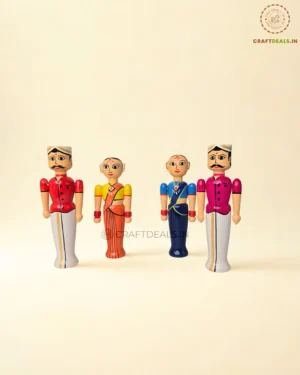 Channapatna Handcrafted Doll Set – Wooden Figurines for DecorOriginal price was: ₹ 1,200.₹ 535Current price is: ₹ 535.
Channapatna Handcrafted Doll Set – Wooden Figurines for DecorOriginal price was: ₹ 1,200.₹ 535Current price is: ₹ 535. -
Product on sale
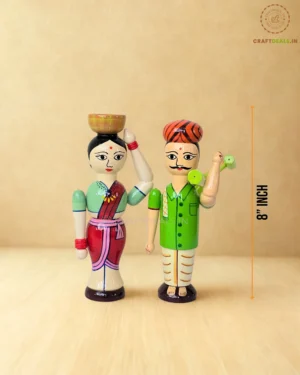 Wooden Village Farmer Dolls Set – Indian Handicraft Toys (“8 inch)Original price was: ₹ 1,330.₹ 735Current price is: ₹ 735.
Wooden Village Farmer Dolls Set – Indian Handicraft Toys (“8 inch)Original price was: ₹ 1,330.₹ 735Current price is: ₹ 735. -
Product on sale
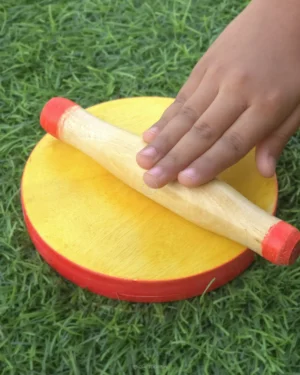 Kid’s Wooden Chakla Belan – Channapatna Toys Pretend PlaysetOriginal price was: ₹ 550.₹ 180Current price is: ₹ 180.
Kid’s Wooden Chakla Belan – Channapatna Toys Pretend PlaysetOriginal price was: ₹ 550.₹ 180Current price is: ₹ 180. -
Product on sale
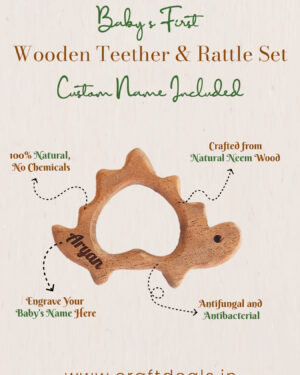 Organic Wooden Neem Teether for Babies (Pack of 2)Original price was: ₹ 780.₹ 385Current price is: ₹ 385.
Organic Wooden Neem Teether for Babies (Pack of 2)Original price was: ₹ 780.₹ 385Current price is: ₹ 385.
INFO Table:
| Key Information | Description |
|---|---|
| Channapatna toys | Traditional wooden toys handcrafted in the Channapatna region of Karnataka, India. |
| Origins | Origin of Channapatna toys can be traced back to the reign of King Tipu Sultan in the 18th century. |
| Bawas Miyan | Resident of Channapatna credited with popularizing and increasing the scale of production of Channapatna toys. |
| Contributions | Travelled to Japan in 1904 and 1909 to learn about lacquer and toy-making processes. Set up a school to train the youth of Channapatna in the art of toy-making and painting. |
| Popular As | Referred to as ‘Master’ or ‘School’ Bawas Miyan. |


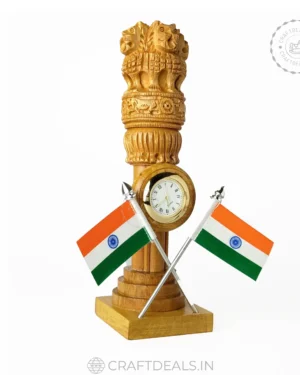 Wooden Carved Ashoka Stambh Pillar with 2 Flags & Clock Premium Pride India Decor
Wooden Carved Ashoka Stambh Pillar with 2 Flags & Clock Premium Pride India Decor 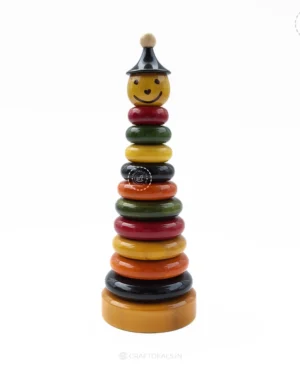 Sorting & Stacking Toys | Wooden Channapatna toys
Sorting & Stacking Toys | Wooden Channapatna toys 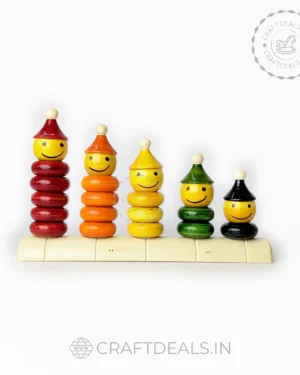
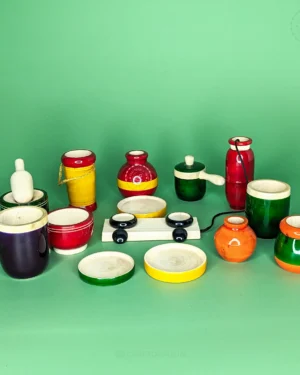
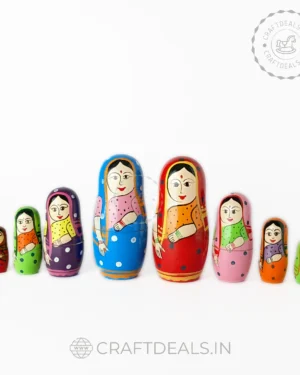


Pingback: What is the special about Channapatna toys? | Craftdeals.in